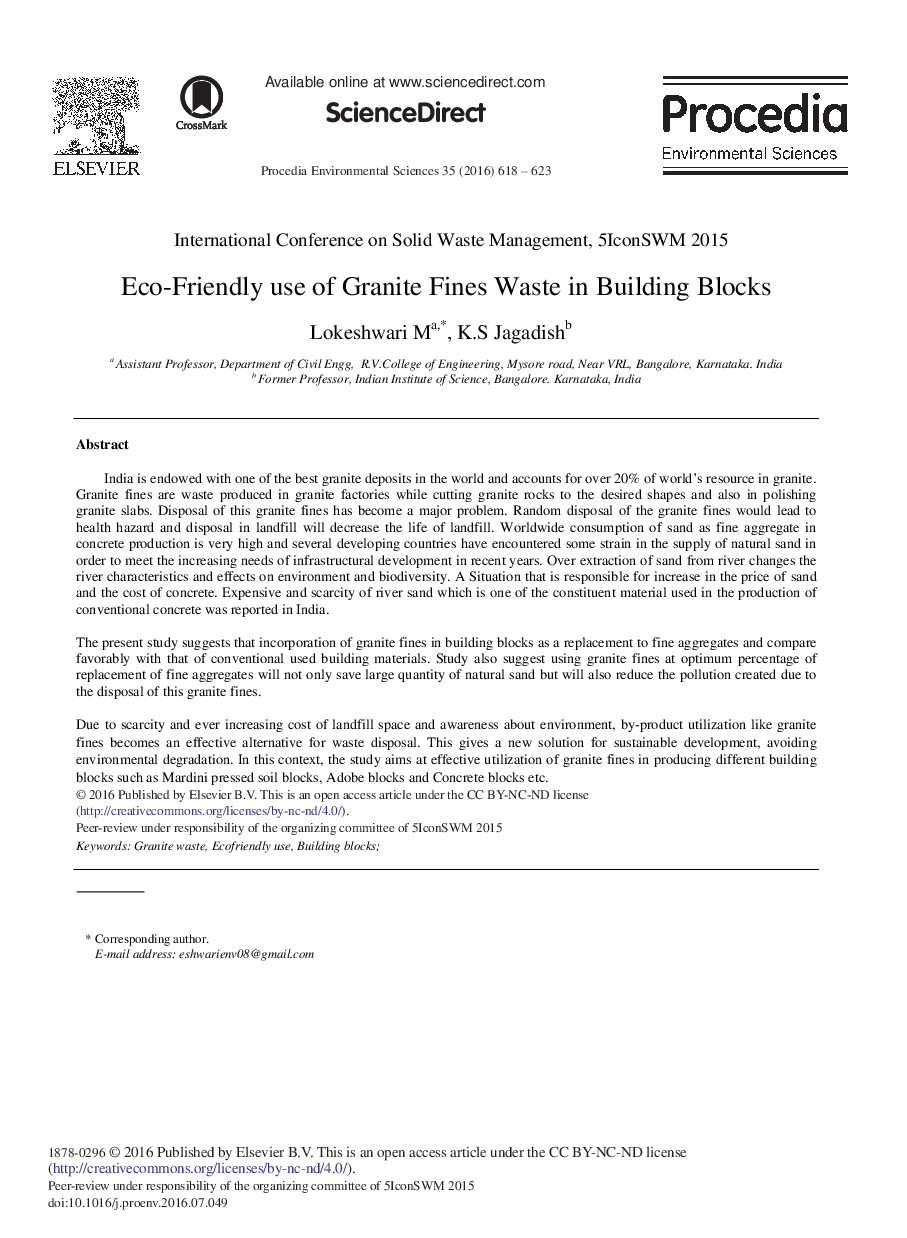| کد مقاله | کد نشریه | سال انتشار | مقاله انگلیسی | نسخه تمام متن |
|---|---|---|---|---|
| 4401415 | 1618609 | 2016 | 6 صفحه PDF | دانلود رایگان |
India is endowed with one of the best granite deposits in the world and accounts for over 20% of world's resource in granite. Granite fines are waste produced in granite factories while cutting granite rocks to the desired shapes and also in polishing granite slabs. Disposal of this granite fines has become a major problem. Random disposal of the granite fines would lead to health hazard and disposal in landfill will decrease the life of landfill. Worldwide consumption of sand as fine aggregate in concrete production is very high and several developing countries have encountered some strain in the supply of natural sand in order to meet the increasing needs of infrastructural development in recent years. Over extraction of sand from river changes the river characteristics and effects on environment and biodiversity. A Situation that is responsible for increase in the price of sand and the cost of concrete. Expensive and scarcity of river sand which is one of the constituent material used in the production of conventional concrete was reported in India.The present study suggests that incorporation of granite fines in building blocks as a replacement to fine aggregates and compare favorably with that of conventional used building materials. Study also suggest using granite fines at optimum percentage of replacement of fine aggregates will not only save large quantity of natural sand but will also reduce the pollution created due to the disposal of this granite fines.Due to scarcity and ever increasing cost of landfill space and awareness about environment, by-product utilization like granite fines becomes an effective alternative for waste disposal. This gives a new solution for sustainable development, avoiding environmental degradation. In this context, the study aims at effective utilization of granite fines in producing different building blocks such as Mardini pressed soil blocks, Adobe blocks and Concrete blocks etc.
Journal: Procedia Environmental Sciences - Volume 35, 2016, Pages 618–623
